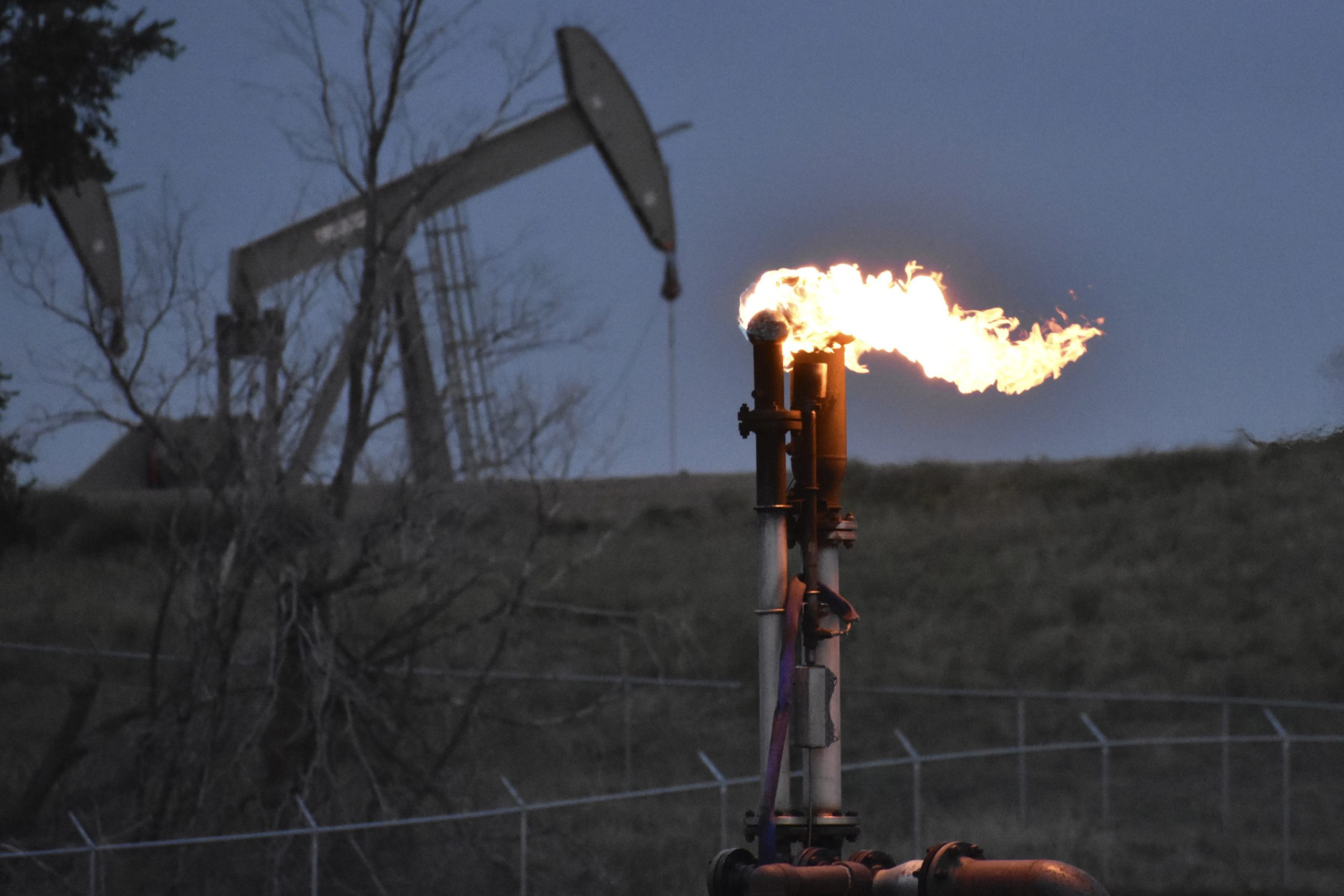By Brian Martucci
Copyright minnpost

A pending regulatory decision over how gas companies recoup the cost of connecting new buildings to natural gas lines could foreshadow a much larger, looming question about the future of gas in Minnesota.
Natural gas is the primary fuel used to heat buildings in Minnesota. It’s also a potent greenhouse gas. When burned, it emits fewer emissions than coal, but widespread leaks from drilling sites, pipelines and appliances result in pollution that traps 80 times more heat than carbon dioxide.
Since 2021, Minnesota utility companies and regulators have been discussing how gas companies will comply with Minnesota’s goal of achieving net-zero climate emissions by 2050. Those proceedings, known as the Future of Gas docket, are ongoing with Xcel Energy, CenterPoint Energy and Minnesota Energy Resources.
Related: How Trump energy policy complicates a Minnesota utility’s path to clean power
The utilities are pitching a wide range of projects, from eliminating leaks to capturing “renewable natural gas” from decomposing food and farm waste. Other ideas include blending “green” hydrogen and sequestering carbon in nature to offset gas emissions.
But Minnesota consumer and environmental groups say all of those solutions proposed by the industry won’t add up to enough progress, and that a more realistic and cost-effective path forward is to shift building heat to electricity, more than 50% of which already comes from carbon-free sources in Minnesota.
“We cannot keep burning gas the way we have and get to our statutory goal of net zero by 2050,” Annie Levenson-Falk, executive director of the Citizens Utility Board of Minnesota, said in an interview.
A decision expected any month now may reveal which direction state utility regulators are leaning. Climate and consumer advocates have asked the Minnesota Public Utilities Commission to stop allowing gas companies to pass along to consumers the cost of new gas hookups.
Utilities’ vision for net-zero gas
Minnesota’s largest gas utility wants to turn more of the state’s food and farm waste into useful energy.
CenterPoint Energy said last week it would buy most of the fuel produced at a planned facility in Meeker County that will daily process nearly 300 tons of organic waste into renewable natural gas, or RNG. The news follows the company’s announcement in August that it would also buy RNG from a Shakopee digester set to open in 2027.
After processing, RNG is chemically indistinguishable from fossil natural gas pumped out of geologic formations; both are largely methane.
CenterPoint is betting on waste-derived fuel as part of a plan to cut its greenhouse gas emissions by 14% from 2020 levels. RNG is considered carbon-neutral or even carbon-negative because it’s made from material that would otherwise decompose and release methane into the atmosphere.
Xcel Energy’s Minnesota gas utility is also working to slash and ultimately zero out its emissions by 2050, the state’s statutory deadline for economy-wide carbon neutrality.
“We aim to achieve net-zero methane emissions on our own system by 2030 and deliver natural gas service with net-zero emissions by 2050 while continuing to serve customers with safe, reliable energy and keep bills low,” Xcel Energy spokesperson Theo Keith said in an email.
Both companies have filed five-year “innovation plans” detailing dozens of pilot programs and research initiatives designed to lower emissions. Some relate to relatively straightforward strategies, like eliminating leaks from their infrastructure. Others involve costly technologies that have yet to be proven at scale, like Xcel’s plans to produce green hydrogen or sequester carbon in the natural environment.
CenterPoint and Xcel are also preparing to file newly mandated long-range plans with state regulators, laying out how they plan to cost-effectively meet projected heating demand in the years ahead. The plans are meant to help prevent price spikes like the one that cost Minnesota ratepayers hundreds of millions of dollars after a February 2021 winter storm that pushed U.S. gas and electric infrastructure to its limits.
The companies’ filings show they believe they can comply with the state’s climate law and protect ratepayers while continuing to expand their systems.
Advocates say industry’s solutions aren’t enough
Skeptics, including at least one consulting firm tapped by the natural gas industry to investigate RNG’s potential, doubt whether alternative fuels can replace fossil gas at scale.
A coalition of groups that include CUB Minnesota, Fresh Energy, the Minnesota Center for Environmental Advocacy and other nonprofits argue that electricity is a more economical way to reduce the climate impact of buildings. As a key first step, they’re calling on regulators to stop the growth of the state’s natural gas system — or, failing that, stop allowing companies to collect money from existing gas customers to pay for line extensions to serve new ones.
Gas utilities should focus on maintaining the existing system while leaning into solutions that are more economical in the long run, they say, like all-electric new construction. Service and main line extensions only make financial sense for the first 10 feet or so, if that, Fresh Energy and MCEA say.
“A lot of groups have said on the record, including utilities, that it’s significantly more cost-effective to electrify new construction than it is to decarbonize it at a later date,” said Caitlin Eichten, director of building energy transition for Fresh Energy.
The commission has not set a vote on the line extension question, though Eichten said that a vote could happen by the end of the year.
The state’s gas utilities, including Xcel and CenterPoint, oppose substantial changes to current line extension policy, which generally allows utilities to spread the costs of new gas mains, service lines and meters among existing ratepayers. In filings this month, the companies said that putting the burden of those costs on new customers would erode Minnesota’s economic competitiveness, increase housing costs, and push customers away from what Keith called “currently the most economic fuel for heating homes and businesses.”
In an email to MinnPost, Minnesota Blue Flame Gas Association President Greg Olson said his organization supports CenterPoint and Xcel’s carbon reduction efforts but “believe[s] it is important to maintain the current line extension policy, which continues to provide reliable, affordable energy access.”
Housing and gas industry groups support the status quo as well.
Mark Foster, vice president of legislative and political affairs for Housing First Minnesota, a coalition of nearly 1,000 homebuilders, remodelers and service providers, warned that “regulatory changes that raise costs, limit fuel choices, or inject uncertainty into residential development will only worsen” the state’s housing affordability crisis.
Fully electric solutions already exist
Central to climate and consumer advocates’ vision for the future of building heat in Minnesota is the heat pump, an appliance that functions like an air conditioner but that can run in reverse, providing heat in the winter and cooling in the summer. The underlying technology has existed for 150 years but recent advances have made them effective at warming buildings even in cold climates.
One northern Minnesota homeowner waded into a process normally reserved for lawyers and policy wonks to say, in effect: It’s working for me.
“We were more than impressed by the performance of our heat pump despite repeated suggestions by the HVAC contractors we consulted that we would need a lot of additional back-up heat,” Grand Rapids resident Garrett Holl wrote in a letter urging the PUC to retire the line extension allowance.
Holl replaced all the gas appliances in his 64-year-old home with electric alternatives, including the heating system, and closely monitored the home’s electricity use for a year. The extra load cost less than $100 per month, and the backup heat accounted for just 2% of its total heating load — the equivalent of “a single 1500-watt space heater running for less than 5 days over the entire winter,” Holl said.
All-electric retrofits remain rare in Minnesota, but Levenson-Falk said more northern homeowners are interested in them these days as cold-climate heat pumps improve. She pointed to Maine, where strong state heat pump incentives have pushed tens of thousands of homeowners to electrify, as a preview of one possible future for Minnesota.
That, plus the rise of more efficient gas appliances and better weatherization, means “people are already starting to use less gas,” Levenson-Falk said. A gas market with flat or declining sales costs more to maintain per unit of gas sold, risking rate increases likely to fall disproportionately on people who can’t afford the upfront cost of a heat pump, she said.
“The risk is that the burden of those high gas rates is going to fall on lower income homeowners and renters,” Levenson-Falk said. “We’re pretty concerned about the ratepayer risk in continued business as usual [and the] line extension allowance is part of that.”
CenterPoint and Xcel say they’re concerned about ratepayers too. They just see a different mix of solutions in the medium and even long term.
Related: Minnesota is emerging as a hub for microgrid technology, unlocking cleaner, more reliable local power
Xcel said in a filing last month that it is “promoting electric options where feasible and desired by the customer,” while calling those efforts “additive and complementary” to other emissions reduction initiatives. It promoted “dual-fuel” heating systems that combine electric, air-source heat pumps with gas furnaces that are more efficient in frigid weather.
In a separate filing, CenterPoint questioned whether the air-source heat pump market was mature enough to support a full-fledged transition to efficient electric heating in Minnesota. The company is instead emphasizing renewable gas harvested from farms and landfills.
Emma Ingebretsen, manager of innovation and decarbonization projects for CenterPoint, said RNG represents a “very large portion” of the utility’s plan and that its R&D initiatives include supporting smaller farms’ efforts to produce the alternative fuel onsite or nearby, expanding the still-nascent supply chain. She said the industry is in a similar place today as the wind and solar industries were a few decades ago.
Levenson-Falk pushed back on that comparison, pointing to a 2025 report funded by the gas industry that found, even under favorable conditions, RNG realistically will not exceed 25% of current U.S. gas use. She said it makes more sense to reserve that resource for “hard-to-decarbonize” industrial processes that require very high temperatures.
“There’s just not going to be a lot of RNG relative to the amount of gas we use now,” she said.



